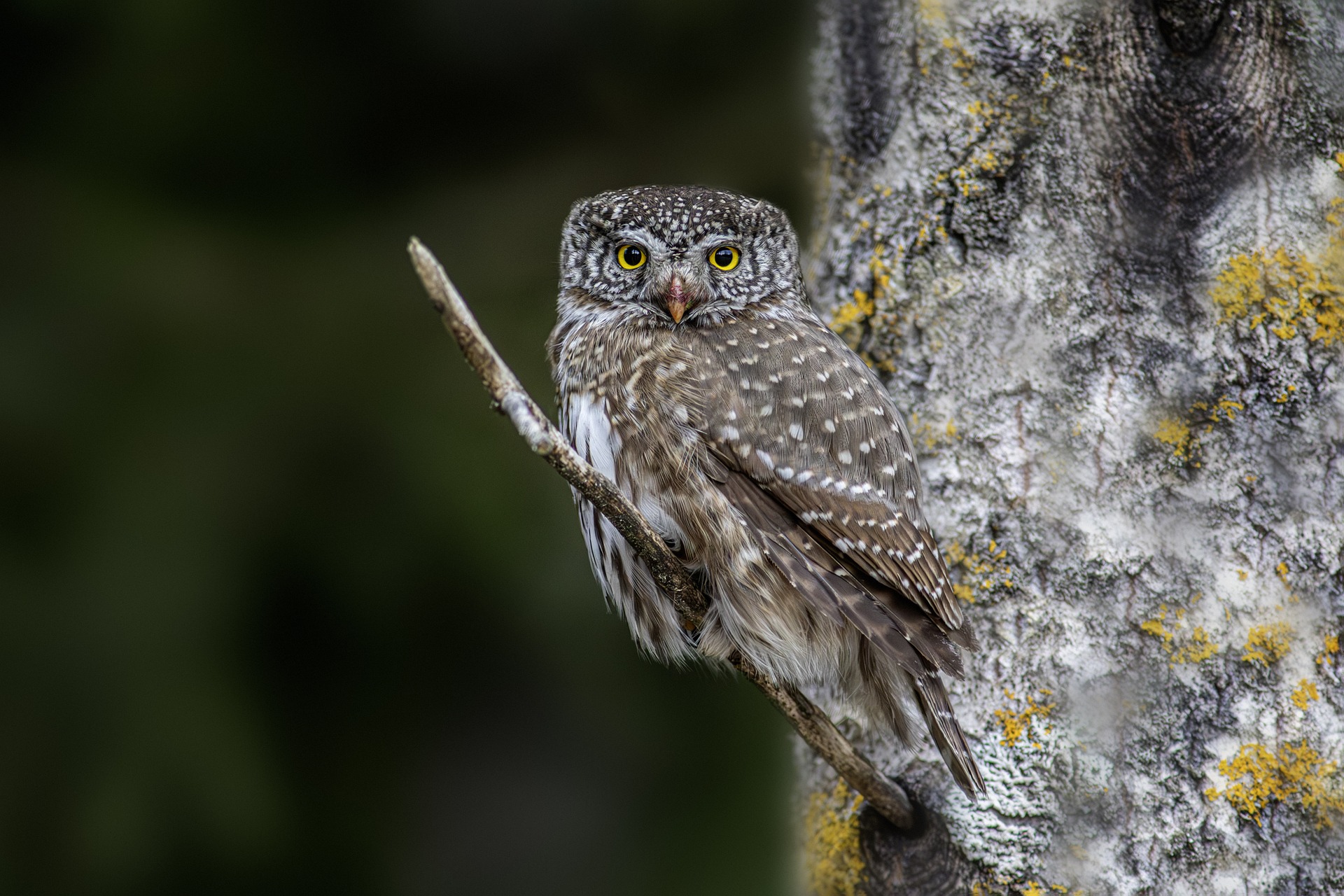The Eurasian pygmy owl (Glaucidium passerinum) is a small owl species native to Europe and Asia. Here are some key characteristics and information about this fascinating bird:
Size and Appearance: The Eurasian pygmy owl is one of the smallest owl species, measuring around 16 to 18 centimeters (6.3 to 7.1 inches) in length. Despite its small size, it has a robust build and a relatively large head compared to its body. It has prominent yellow eyes and a rounded head with a distinct facial disk. Its plumage varies but typically includes a mix of brown, gray, and white feathers, providing excellent camouflage in its woodland habitat.
Habitat: Eurasian pygmy owls are found in a variety of forested habitats, including coniferous and mixed forests, as well as woodlands with dense undergrowth. They prefer areas with plenty of cover, where they can hunt for prey while remaining well-camouflaged.
Hunting and Diet: Like other owls, the Eurasian pygmy owl is primarily a nocturnal hunter, but it can also be active during the day, especially during the breeding season. Its diet consists mainly of small birds, rodents, insects, and other small vertebrates. Despite its small size, it is a skilled and agile hunter, capable of capturing prey larger than itself.
Behavior: Eurasian pygmy owls are solitary birds and are generally territorial, especially during the breeding season. They are known for their distinctive call, which consists of a series of whistling notes repeated at regular intervals. They may also use various vocalizations for communication and territorial defense.
Breeding: Breeding typically occurs in the spring and early summer months. Eurasian pygmy owls nest in tree cavities, old woodpecker holes, or abandoned nests of other birds. The female lays a clutch of around 3 to 7 eggs, which she incubates for about 28 to 30 days. Both parents are involved in caring for the young, which fledge after about 4 to 5 weeks.
Conservation Status: The Eurasian pygmy owl is not considered globally threatened and is listed as a species of “Least Concern” by the International Union for Conservation of Nature (IUCN). However, like many owl species, it faces threats such as habitat loss, fragmentation, and degradation, as well as potential predation and competition from invasive species.
The Eurasian pygmy owl is a charismatic and elusive bird that plays an important role in its forest ecosystem as both a predator and prey species. Its small size and cryptic plumage make it a challenging but rewarding sight for birdwatchers and wildlife enthusiasts.
Views: 553
Subscribe to the newsletter:
